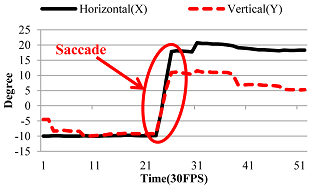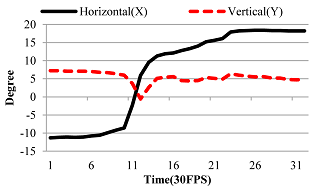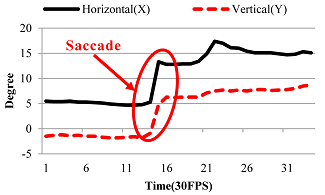In recent years, smart phones and tablet devices which can handle various
kinds of information simultaneously are spreading. Likewise, the use of
E-books has been increasing.The character data and accompanying illustrations
of paper media are shifting to digital data that can be viewed on smart
phones and tablet devices. Although the history of digital devices is short
compared with that of paper books, they have various merits: a lot of books
can be saved and carried in one device, we can purchase books that we want
to read immediately, and so on. However, it is hard to say that E-books
have overtaken paper books in popularity, and there are some experiential
differences when reading E-books and paper books.
In this research, we compared eye movement in the reading of E-books and
paper books. We prepared two types of E-books, one displayed as a single
page, the other as a two-page spread.
Reference:Hideaki Takahira, Kei Kikuchi, Mitsuho Yamada, Eye Movement while
Reading E-books, SID 2014, P-40
  
Left figure shows the eye movement (angular displacement of horizontal and vertical direction) when the eyes move to the next page of an E-book. Horizontal eye movement and vertical eye movement occur only once by saccade. These movements occurred in both type of E-books, one displayed as a single page, the other as a two-page spread that were used in the experiment.
Middle figure shows the eye movement (angular displacement of horizontal
and vertical direction) when subjects moved eyes to the next page of a
paper book. The subject moved the page toward the right-hand side after
flipping the page with the left finger. Horizontal eye movement occurred
slowly. The last line of the page was short, and since it had ended in
the upper part of the line, the vertical eye movement was small.
Left figure shows another result of the eye movement (angular displacement
of horizontal and vertical direction) when a subject moved his eyes to
the next page of a paper book. After completing a page the subject represented
in the left figure first bent the book and brought pages on either side
closer and then returned the book to the state where the pages on either
side were opened flat. Horizontal eye movement and vertical eye movement
occurred only once by saccade.
E-Book Paper Book Click to play the video below
|